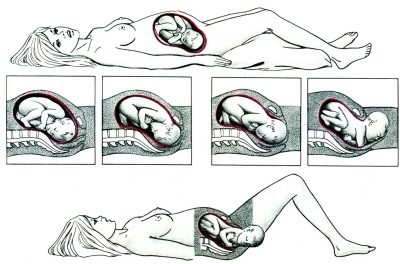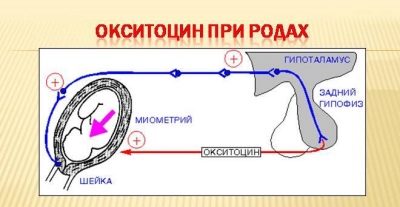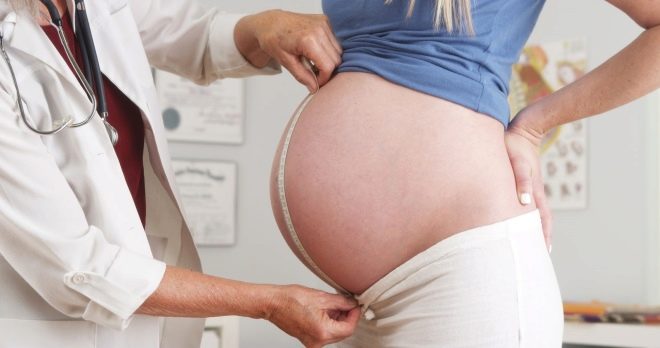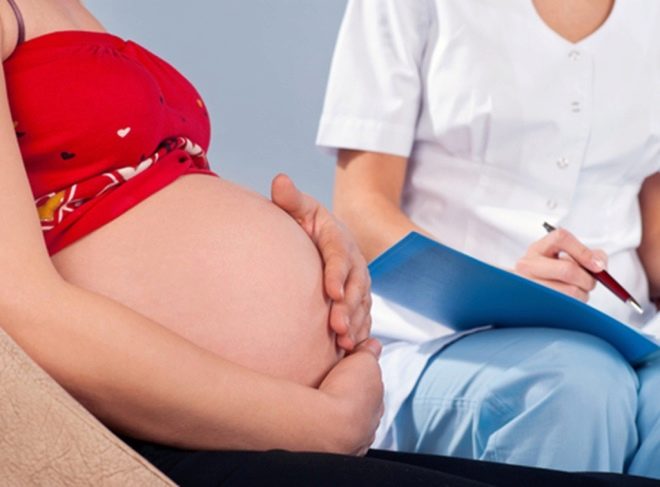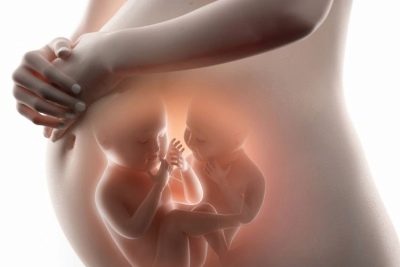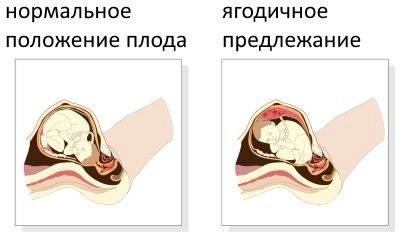Why does the stomach sink before birth and how to understand that this has happened?
Pregnant women are looking forward to when the belly drops. This feature is considered one of the most reliable signs of the imminent approaching genera. How is the omission, why this happens, and how to understand that the stomach is lowered, we will tell in this article.
What's happening?
What women call abdominal prolapse is called the formation of the fetus in medicine. In other words, at a certain point in time in a pregnant woman in the stomach, the crumb begins to assume such a position, which will maximally facilitate the task of passing through the birth canal. The mechanism of the formation of the fetus is due to nature itself. It usually starts in the middle of the third trimester, along with large-scale preparation of the female body for childbirth.
For a baby, the birth process is no easier task than for his mother. He will have a difficult path, but because nature has taken care in advance that the crumb was ready for it. The formation of the fetus lies in the fact that the head of the baby, if he is in headache presentation, is pressed tightly against the exit to the small pelvis. From such a position it will be most convenient for him to be born when the cervix opens completely during contractions.
During childbirth, the movements of the baby will also obey the biomechanisms of labor. He will turn the head exactly as needed to pass through the birth canal and do no harm to himself. Biomechanisms of childbirth are also conceived and implemented by nature itself.
During the long months of pregnancy, the fetus grows from an embryo into a real, but still small, person. The uterus grows along with it, providing the crumbs with enough space for development. For three trimesters, the uterus of a woman grows 500 times in comparison with its original size. The doctor regularly measures the height of standing of the bottom of the uterus - the so-called indicator VSDM.
With intensive growth, the child rises, so VSDM is growing from week to week. And only in the later stages, the doctor can draw the attention of the expectant mother to the fact that this indicator has stopped and then decreased. This means that a fetus has developed. From his top position, the baby moved down, prepared for birth.
When does this happen?
It is difficult to say exactly what kind of signals a baby receives in order to start the way down. It is believed that the formation of the fetus - its reaction to changes in the hormonal background of the mother. With blood through the placenta, the crumb begins to receive a qualitatively different composition of hormones. As the woman gets closer to the birth, the production of the hormone progesterone, which has been responsible for maintaining the pregnancy since her very first day, is decreasing.
It is replaced by oxytocin, which is produced by the placenta and pituitary, the concentration of estrogen increases. Changes occur in the uterine tissue, which is still the abode of the child - the structural cells of the myocytes begin to produce more special protein actomyosin, which will allow the cells of the uterus to contract and stretch in the process of contractions and attempts.
Having caught all these changes, the child's body intuitively understands that it is time for him to prepare. Soon everything will change. When this happens, depends on many factors - on how well the preparatory processes in the maternal organism take place, how many births the woman has had before, in what condition the muscles of the uterus and abdomen are.In primiparous, the abdomen is usually lowered earlier — about 2–4 weeks before giving birth, and sometimes even earlier. In multiparous fetus occurs almost before the very birth - a week or a few days. Obstetricians are universally known examples when the stomach in the second or third labor is lowered only with the onset of labor contractions.
Lowering the baby in the uterus and the uterus itself after 36 weeks during the first pregnancy is considered optimal. If the formation of the fetus occurs before this date, the doctor may suspect the threat of premature birth.
In all categories of parturient women, such a state should not be overlooked - a woman should be placed under special control in order to take measures, if necessary, to prevent premature birth of the child, if possible.
The indicated periods are only average, average. They can not be a guide to action for all women in the "position". The actual term of omission of the tummy of the future mother can occur later or earlier, since all women are different. They have different sizes of the pelvis, fetus, different constitution of the body and the state of the muscle tissue. In addition, the child is not always in the main presentation, although in most cases it is located that way.
Diagnostic signs, sensations
It is not as difficult to find out that the omission has happened as it seems to be pregnant, especially to those who have not yet had the experience of motherhood and are awaiting the birth of their first child. Visual signs can be noticeable not only to the woman herself, but also to everyone who surrounds her. The abdomen changes its shape: if earlier it resembled a basketball more, then after the fetus is formed, it becomes more like a melon torpedo or a rugby ball, the uterus becomes more oval.
To determine whether the abdominal prolapse has occurred, you can carefully examine your own figure in the mirror. The task is greatly facilitated by the fashion of the past few years - making a selfie of the tummy in the mirror at different stages of pregnancy. So future mommies track the growth rate of the tummy and conduct a kind of photo report. After the formation of the fetus, the shape of the abdomen will be very different, and the abdomen itself will look smaller in size.
A centimeter tape will come to the aid of the expectant mother. With its help, you can measure the height of standing of the bottom of the uterus - this is the highest point, almost under the breast. After omission of the abdomen, these values become less than a week earlier. You can learn about the previous values of VSDM from the exchange card, this indicator is measured at each doctor's appointment and entered there.
You can check the assumptions using a simple manual test. For him, a woman will need only her own palm. If it fits between the bottom of the uterus and the lower line of the mammary glands, the stomach is lowered and there is no doubt about it.
Guessing the formation of the fetus can be and for a number of changes in health. In the later stages, the large uterus with the baby, the placenta, which weighs about 500 grams, with the waters contained in the fetal bladder, occupies almost the entire space of the abdominal cavity. As a result, the internal organs, which were usually located quite comfortably there, begin to experience significant inconvenience.
The abdominal cavity, unlike the uterus, does not enlarge and does not expand during the carrying of the baby. Therefore, the authorities have to make room. Loops of intestines turn out to be suppressed, which is why women suffer from constipation, sometimes turning into diarrhea, accumulation of intestinal gases. The uterus presses the stomach below, which leads to the reflux of gastric juice in the esophagus in the opposite direction. Because of this, belching and heartburn develop.
It goes to the bladder, pancreas and gall bladder. The woman is tormented by frequent urination, the flow of bile is disturbed. The uterus puts pressure on the diaphragm, and this causes the development of shortness of breath and heavy breathing even with the most slight exertion or walking.
After omission, the woman is relieved in the literal and figurative sense of the word. It is easier for her to get out of bed, the work of many organs that have been compressed by the large uterus for several weeks is being restored.
Thus, the signs of the formation of the fetus in the uterus include some changes in the state of health and sensation.
- The diaphragm is released - normal breathing is restored. A woman gets the opportunity to breathe again with full breastfeeding. Dyspnea does not disappear at all, since it is partially associated with the gained weight, but becomes less noticeable.
- The ribs, which somewhat "diverged" because of violations of intra-abdominal pressure, cease to hurt painfully. With the prolapse of the uterus, the child no longer knocks on the ribs with the legs, as it was before, but the activity is mainly manifested in the lower abdomen, the movements themselves become sharper and less painful for the future mother.
- The only organ that does not get any easier is the bladder. The pressure of the descending uterus on him increases, the urge to urinate increases, become more frequent.
- Symphysitis may first appear or escalate. - there is an ache in the region of the pubic joint, which increases with the change of body position, while walking.
- Constipation increases and they have nothing to do with the future mother's diet - the intestinal loops continue to undergo inconvenience.
- The gait becomes even more awkward, walking becomes harder and harder.
Quite often, simultaneously with the omission, training contractions are intensified - short-term and irregular contractions of the uterus. The stomach becomes “stony”, but when you change the position of the body, while taking a warm shower, the tablets “No-Shpy” such fights quickly pass, the uterus relaxes. Such contractions do not speak of the onset of labor, as well as the development of the fetus.
If the stomach is lowered, there is no need to go to the hospital. Childbirth can begin after a few days or a month.
If omission does not occur
In women’s forums and in doctors ’offices, one often hears the question of what to do if the stomach does not go down. Does this mean that the moment of the onset of labor is postponed, can the birth begin if the stomach is not lowered?
None of the medical obstetric manual does not say that a pregnant woman’s stomach is necessarily lowered. There are situations in which omission does not occur at all, but childbirth begins in the estimated time or even slightly earlier. There is no rigid pattern between the formation of the fetus in the uterus in the "starting" position and how much is left before delivery.
Circumstances in which the stomach usually does not fall before childbirth, there may be several.
A woman is carrying a multiple pregnancy. If there are two or three babies in the uterus, it is physically difficult for them to descend to the exit from the abdominal cavity in the small pelvis. The option of a slight omission, almost indistinguishable visually, is permissible only if the woman bears twins, one of which is located above the exit head down. If the twins are identical, located inside one fetal bladder, the omission does not occur at all.
- A woman is diagnosed with polyhydramnios. Exceeding the amount of amniotic fluid in the fetal bladder makes the uterus larger in size, and therefore the baby may well not fall down or it will be almost imperceptible to the future mother.
- Pregnant bears a large or giant baby. The estimated weight of the child, according to ultrasound, is more than 4 kilograms or close to 5 kilograms. It will be difficult for such a bogatyr to press his head against the exit to the small pelvis.
- The child has an abnormal position in the uterus. He sits on the pope, lying askew or across. If the fetus does not turn around before 34–35 weeks, it’s not worth counting on this to happen - the chances are miserable.In cases of pregnancy with an abnormal presentation, planned cesarean section is most often recommended, and therefore the timing of abdominal prolapse does not matter. The abdomen itself during such pregnancy does not fall for physiological reasons.
Not to miss the moment of the beginning of labor will help careful observation of their own state. Regardless of the formation of the fetus or its absence, a woman may show other signs of approaching labor activity - insomnia, diarrhea, jelly-like mucous secretions from the genitals (a sign of discharge of the mucus plug), increased training fights, anxiety and increased anxiety, mood swings. An objective sign is cervical ripening.
What to do after omitting
Often, women wonder if it is necessary to somehow behave differently after the baby goes down. Medicine has no special recommendations for this case. It is necessary only to remember that this phenomenon is a sign of imminent labor, and therefore it is worth doing a few things.
- Report your observations to the doctor in the antenatal clinic.
- Check whether all the necessary documents and belongings are packed in a bag intended for hospitalization in the maternity hospital.
- Take all measures to get the best sleep possible - childbirth is not far off, a woman needs to accumulate strength. For insomnia, you should ask your doctor to prescribe a mild sedative to help you fall asleep.
- Buy a package of special urological pads - after a woman’s dropping, women often suffer from uncontrolled urine leakage due to pressure on the bladder. Such “leaks” can occur with laughter, during coughing, sneezing, and also with little physical exertion. To tolerate on the way to the toilet also becomes very difficult, and therefore urological pads will help to avoid unpleasant moments.
- After the discharge of the mucus plug - do not wash in the bath, do not go to the pool and do not live sexually.
- Continue to carefully count the movements of the fetus on a daily basis, if problems are detected, immediately contact a doctor.
How to understand that the stomach before childbirth fell and other precursors of childbirth, see the following video.


